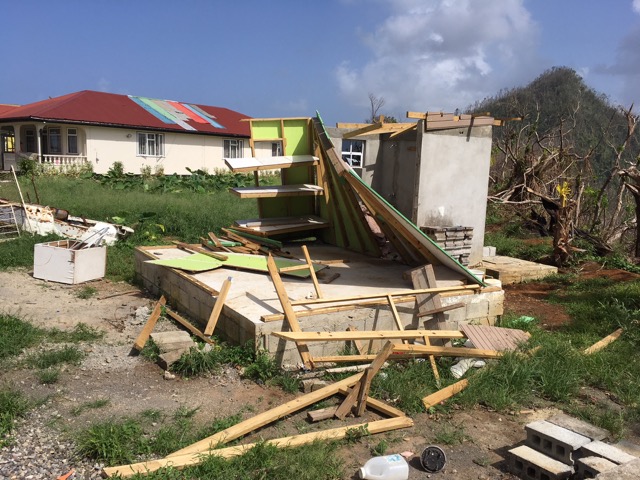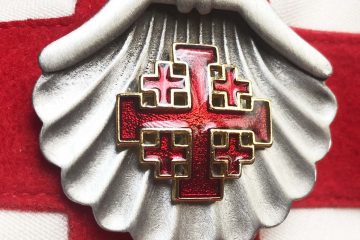UPDATE: Dominica, profiled in the “Telegraph,” an island in need

Editor’s note: Our October issue featured an article highlighting the twinning relationship between three parishes in the archdiocese with parishes in Dominica. Shortly after we went to press, the island was ravaged by the most powerful hurricane in its history. Its twinning partners are committed to aiding in Dominica’s recovery efforts and provided this update.
By Patricia Plas and Robert Hartings
Most people in the United States know of the damage done to Puerto Rico by Hurricane Maria. Few seem to know that the Level 5 hurricane first swept through and demolished the island country of Dominica. This tiny independent nation with a population of 73,000 is 29 miles long and 16 miles wide and lies between Guadeloupe and Martinique. It’s a volcanic island that was covered by rainforest. This once-lush tropical island is now barren, the land and trees stripped bare. Twenty-six people died and 32 are missing. Most houses suffered severe damage and quarter no longer exist. Many people continue to live in shelters. Most of the country has no drinking water or electricity. Communication with the outside world has been very difficult to achieve.
Dominica is an agricultural society that has always provided enough food for its people. Because its farmland was decimated, Domnicans now rely on re- lief supplies of canned food and rice. The government has identified food security as its first priority in rebuilding and is trying to help farmers get back in the field.
Slow recovery is discouraging to many. Through online Dominican news we have learned that 20 percent of the population has left the island in boats over the past six weeks. The mass exodus, principally of young persons, is of great concern. How many will ever return?
The United States has few ties to Dominica. It’s understandable that our country’s focus of support is with the U.S. territory of Puerto Rico. It has suffered much damage and is in dire straits.
However, in the Archdiocese of Cincinnati we find many friends of Dominicans who wish to support them in some way. In Piqua, the parishes of St. Mary and St. Boniface have a twinning relationship with a parish in Portsmouth, a northwestern village of the island. In Cincinnati, St. Anthony Church in Madisonville twins with a parish in Castle Bruce, a northeastern village. Over the years, members of faith communities from both countries have visited each other, participating in the parish activities of the other, sharing our different cultures and praying together.
The Sisters of Charity also have close ties with Dominica. Sister Mary Gallagher recently returned after five and half years of working with the Diocese of Roseau, which encompasses the whole country. The community has provided grants to assist social centers in caring for preschool children, providing skill-building programs for adolescents and promoting diocesan youth ministry programs.
Members of the parishes here and the Sisters of Charity could not contact friends in Domnica during the first weeks after the hurricane because there was no power. Finally, as some areas regained electricity, friends from Portsmouth and Castle Bruce contacted us through WhatsApp. One friend reported her house was destroyed by flooding, that she boils all her drinking water, and Dominicans are surviving on relief supplies. Because 95 percent of the houses still standing had their roofs blown off, tarps and building supplies are greatly needed. We hang onto online news from the island and view many photos of the devastation of a country. In doing so, we feel helpless in giving support to them. Even the airport is open only for planes carrying relief supplies.
Recently, on WhatsApp, a friend referred to the resilience of her countrymen, giving assurance that they will work their way back and “not to worry.” Accustomed to eating fresh food from land and sea, she made a joke about tolerating foreign food out of a can. Then she wrote “lol.” Wow! How stoic she is to be able to “laugh out loud” at her situation! We find that our twinning partners have great hope in God’s love.
Bishop Gabriel Malzaire of the Dominican diocese is asking us for financial help, setting up a Disaster Fund. So far, the Sisters of Charity have sent donations. The parishioners in the twinning churches of Piqua and Cincinnati have given generously as well as the Mission Office of our archdiocese. Restoration of Dominica will take years. Our U.S. twinning parishes have taken on the role of advocates for a people and country that hopefully will not be forgotten.
Catholic Relief Services is coordinating the fundraising effort for Dominica. For information about making a donation, email [email protected].













